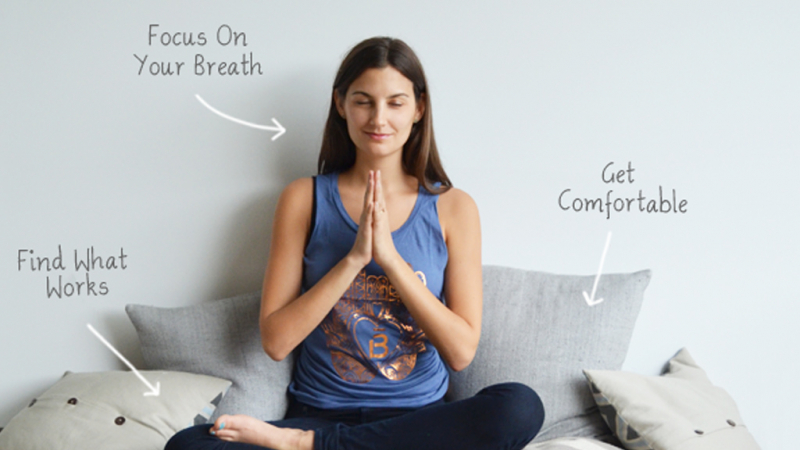Get Comfortable
The first step in any meditation practice is to find a comfortable seat. A folded blanket, meditation bench, firm pillow, or bolster are all excellent options for meditation. Make sure your hips are at least four inches higher than your knees if you're sitting on the floor. This will keep your spine straight and alleviate any knee discomfort. Sit against a wall if you need back support. Alternatively, sit on a chair with your legs uncrossed and your feet on the ground. Whatever seat you choose, the goal is to sit comfortably with a tall, straight spine. Make sure you're at a comfortable temperature or have a blanket to keep you warm.
You've most likely seen photographs of people meditating in the traditional lotus pose. However, that position isn't comfortable for everyone, and it's difficult to mediate when you're physically uncomfortable.
Fortunately, you don't have to sit in a specific position to meditate well. Instead, simply choose a comfortable and natural position that you can hold. Both sitting on a chair and lying down are perfectly acceptable.
"Comfort is much more important than 'looking' like you’re meditating," says Bingham.
If sitting motionless is difficult for you, try meditating while walking or standing. Some people feel that focusing on each phase, like focusing on breath, helps them progress through the meditative process.
Consider creating a relaxing, peaceful meditation area, or perhaps forming a meditation ritual. Candles, soothing music, and images and mementos of loved ones can all aid to improve meditation.
“The benefits of the ritual are also important, as the process becomes a statement that your wellness matters,” Bingham asserts.









